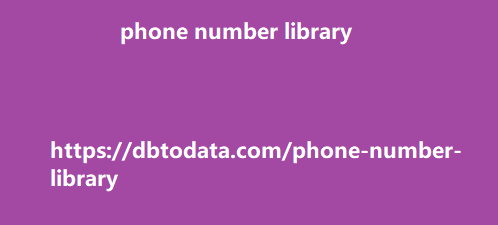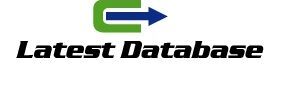Here are some points to consider: –so regularly check your keywords to see where your website falls. This will help you stay up to date with keyword and search algorithm trends, and make adjustments when needed. Make it a point to: Regularly check your keyword list and incorporate new, relevant keywords Keep an eye on your ranking in the SERPs for your chosen keywords Monitor your competition’s keywords and SEO performance Use of Long-Tail Keywords: Incorporating long-tail keywords can significantly improve your SEO strategy. They tend to be less competitive, more targeted and have a higher conversion rate. Here are some points to consider: Use keyword research tools to find long-tail keywords relevant to your content Understand the intent of your users to identify the long-tail keywords they might be using Optimize your content around long-tail keywords to drive targeted traffic Strategic Placement of Keywords: Good keyword placement can aid search engine bots in identifying the relevance of your content.
However, you need to avoid keyword
stuffing, as it can lead to penalties. My tips are: Incorporate your primary keyword in your title tag, URL, and meta description. Use keywords in your headings and subheadings. Maintain a natural and reasonable keyword density in your content. Find Ways to Consistently Improve Rankings: There are ways to ensure your keyword rankings keep going up. The best way to deal with threats or opportunities to your keyword rankings is to keep up-to-date with the best SEO strategies. Here’s how: Always do your research. There are hundreds of blogs that cover everything about SEO–and SEO-hacker’s blog is one of the best. For example, check out my post with 8 ways to dominate your local SEO rankings.
Keep an eye out for massive movements in
SERP volatility. If you time it right, you can steal the top spot from your competitors. Stay updated on Google algorithm changes. Aside from official guidelines, you will want to pay attention to what other SEOs are saying on forums after each update. Following these can help you make the most out of your keyword tracking efforts, and easily optimize your website’s ranking. There are several 5xx errors you can run into when you’re running a website–one of the more common ones is the “509 Bandwidth Limit Exceeded.” Like others in this category of status codes, it can be frustrating to see this on your screen, especially since it prevents your web pages from loading for your visitors.
The good news is that this error is easy to solve–
you just need to know how to troubleshoot it. I’ll walk you through how to do it. What is the HTTP 509 Bandwidth Limit Exceeded Error? Example of HTTP 509 Bandwidth Limit Exceeded Error Message If you’re seeing this on your screen, it means exactly what it says in its message: that your website is using more bandwidth than your hosting plan allows. Bandwidth is the amount of data your website can send or transfer to any user that loads it within a set period (usually per month). That means bandwidth gets used up, bit by bit, each time a user visits your website. If you’re seeing lots of traffic, then you need more bandwidth to deliver data to those visitors.
And when you reach your bandwidth
capacity’s limit, the 509 Bandwidth afghanistan phone number library Limit Exceeded error code appears. But that doesn’t mean you need to get angry with your hosting provider. It’s not anything that they’re doing, it just means the plan you’re paying for is a limited hosting plan. Your website will start loading properly again once your bandwidth allowance resets. Webmaster’s Note: This post is part of our advanced guide to Technical SEO, where I cover everything you need to know about crawlability, indexing, and page speed optimization, as well as helpful tips on how to troubleshoot common website errors. I also cover other 5xx errors, including 503 errors and 504 errors. How to Fix the 509 Bandwidth Limit Exceeded Error To troubleshoot this error as quickly as possible, there’s one thing you need to do: contact your hosting provider.
Do this as soon as you notice your website
returning 509 Bandwidth Limit Exceeded errors. You can ask them to increase your bandwidth limit or switch to an unlimited hosting plan. The second is a good option if you’re currently using shared hosting plans. Next, consider streamlining the files on your portal. To do this, you will have to optimize your web application by utilizing reduced data size or file compression for anything big on your website (such as photos). You can also consider caching data, which will create a duplicate of the portal. Doing this will allow data to be fetched from the web director, rather than the back-end. The last two options allow you to reduce the amount of bandwidth each user takes up whenever they try to load a page or click on your website.
What Causes 509 Errors? Spike in Organic Traffic can
cause a 509 error code As [update] latest regulations on invoice issuance time you’ve probably guessed by now, a 509 error is always caused by something taking up too much bandwidth before your hosting plan resets for the given period. This can be the result of the following: Sudden traffic spikes – more visitors than usual going to your website (maybe as a result of a new promo or ads campaign you’re running), can quickly eat up your available bandwidth. Insufficient hosting resources – if the hosting plan you have, or the server infrastructure of your hosting provider is not properly configured or given enough resources, then it can limit bandwidth. Too big files – Certain file formats (or the files themselves) may create enormous datasets, which can consume more bandwidth than what you have available.
Bot traffic or DDoS attacks – malicious bots and
attacks can flood a website with chine directory requests, which can push you past the limit of your bandwidth allocation. Using a shareable hosting package – sharing a package with other websites means you share a bandwidth allowance, which these other websites can use up. How to Avoid 509 Bandwidth Limit Exceeded Error Luckily, problems with bandwidth allowance are something you can easily fix, so your website can avoid dealing with a 509 error again. Here are five potential solutions for you to consider: Use Content Delivery Network (CDN) caching Optimize your website files and database Delete any unused files Prepare for traffic spikes Increase site security Network (CDN) caching is a good option to help you reduce the strain on your bandwidth allowance.







